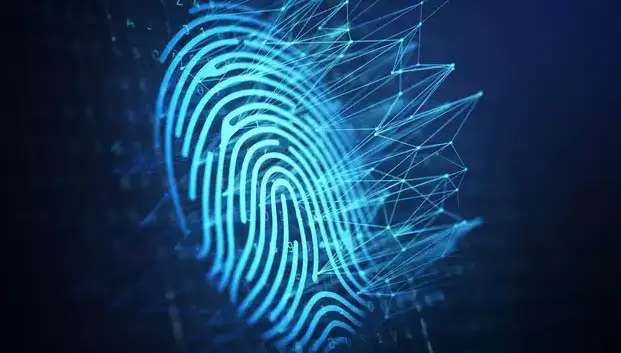Digital transformation is enabling more enterprises to implement work-from-home and “Bring Your Own Device” (BYOD) policies. On top of this, today's customers are now able to access information, services, and more through their personal mobile devices. With almost every process and task digitized, digital risk has consequently exploded. A study by Deloitte shows that 71% of companies see digital risk as a top emerging concern, as reliance on a widening array of technologies grows rapidly.
With many business tools and consumer resources now located outside the organization's traditional security perimeter, the authentication of an employee’s identity has evolved to become a formidable security challenge for both businesses and customers. Enterprise risk management (ERM) and identity verification (ID) solutions have grown to address the need to protect against digital risk, including identity fraud, unauthorized access, and a burgeoning array of other cybersecurity threats.
The growing demand for stronger authentication, business agility, compliance, operational efficiency, and risk mitigation is fuelling a boom in ERM and ID verification businesses. As a result, the global markets for these services are rife with opportunities for investment and M&As.
Fast-Paced, High-Growth Markets
Current market data indicates strong performance for both ERM and identity verification industries.
The ERM industry is set to grow substantially. From $31B in 2020, the market's value is anticipated to reach $89.7B by 2027, growing at a CAGR of 16.4%. In 2021 alone, global spending on ERM solutions and services is set to exceed $150B.
Likewise, the global ID market is poised to grow at a CAGR of 14.4% from 2020 to 2027. From $7.4B in 2020, the market value for ID verification is projected to reach $19B by 2027.
Demand for ID verification services is set to increase as well. From an estimated total of 1.1B identity verification checks performed by the end of 2021, that figure will increase to 3.8B checks annually by 2026. This will generate more than $17.2B in annual revenue for ID verification service providers and vendors.
Fraud Rates Intensify in 2021
According to the 2021 Identity Fraud Report by Veriff, fraudulent activities across the world have increased by 61% in 2021, compared to 2020. Emerging sectors are the ones most targeted – in particular, fintech, mobility, and crypto industries.
The fintech sector saw fraud incidents grow by 50%. The majority of attacks exploited flaws in ID verification, with fraudsters using stolen or fake ID cards (33.91%) and passports (29.19%) being the most prevalent of these.
Along with the rise of crypto comes the increasing risk of fraud in it as well. ID document fraud doubled in 2021 compared to 2020. The Veriff report finds that crypto persists as the sector with the highest fraud risk, as compared to mobility and fintech. The 2021 Identity Fraud Study by Javelin Strategy & Research reported that an estimated 49M American consumers fell prey to fraudsters. Cumulative financial losses this year amounted to a shocking $56B.
As businesses and consumers have shifted online, fraudsters have followed suit. The good news is that consumers are becoming cognizant of the risks involved and are willing to let go of traditional authentication and security methods and use advanced enterprise risk management and identification technologies to mitigate the risks and threats.
These trends – intensifying threats by bad actors, and an increased willingness by businesses and customers to use new technologies to contend with these cyber dangers – mean that things will continue to heat up through 2022.
Banks: ERM and ID Verification’s Biggest Customers
The financial sector will drive the majority of demand for enterprise risk management solutions. Most small and mid-sized institutions such as credit unions and specialty finance providers now include ERM as part of their strategic digital initiatives.
Banks, on the other hand, have been investing heavily on enterprise risk management software since 2018 and have accounted for 55% of the ERM market's revenue share that year. This trend is projected to continue in the coming years.
The banking sector's increasingly stricter and continuously evolving anti-money laundering (AML), Know Your Customer (KYC) and customer due diligence (CDD) regulations all contribute to the intensifying demand for more powerful and robust ID verification solutions. This demand will be met by new solutions, which investors should pay close attention to.
BYOD Trends: Digital Products Further Drive Demand
The increasing adoption of BYOD policies in the workplace and the rise of new digital products and services are further fueling the need for ERM and ID verification.
Security Magazine reports that 59% of businesses have already adopted BYOD while 67% of professionals use their personal mobile devices for work-related tasks. In addition, 87% of enterprises rely on their workers' ability to access mobile business apps via personal smartphones.
These developments create significant security risks, such as customer data breaches or supply chain attacks. To mitigate these threats, Gartner recommends that enterprises include ERM and identity verification as core efforts to "standardize threat detection and response activities."
Potential for M&A
The trend is clear: there is a huge demand for enterprise risk management software and ID verification solutions and services – and this demand is likely to stay high through 2022 and beyond. For investors and boutique banks seeking opportunities in the ERM and ID verification spaces, now is a great time to get involved.
The ID verification industry "is a very buoyant market with hundreds of millions of dollars of investment and intense activity from an M&A point of view," says Alan Goode, founder and CEO of Goode Intelligence.
A total of $1B of investment poured in within the first six months of 2021. And, according to Goode, current activities indicate no signs of this abating for the remainder of the year and into 2022.
Mergers and acquisitions can be expected in the enterprise risk management technology space as well. “Looking ahead, we’re seeing early market signals of growing automation and further adoption of machine learning technologies in support of AI security," says Lawrence Pingree, managing research vice president at Gartner.
Score The Best M&A Deals in ERM, ID Verification with Finalis
Finalis leverages proprietary technology to perform due diligence and compliance tasks in a matter of hours. Finalis also offers access to a growing network of industry experts – including enterprise risk management and ID Verification experts – enabling you to partner and collaborate with professionals, and optimize winning deals.
Get in touch with the Finalis Insights Team to learn how Finalis can help you stay up-to-date with your industry.






